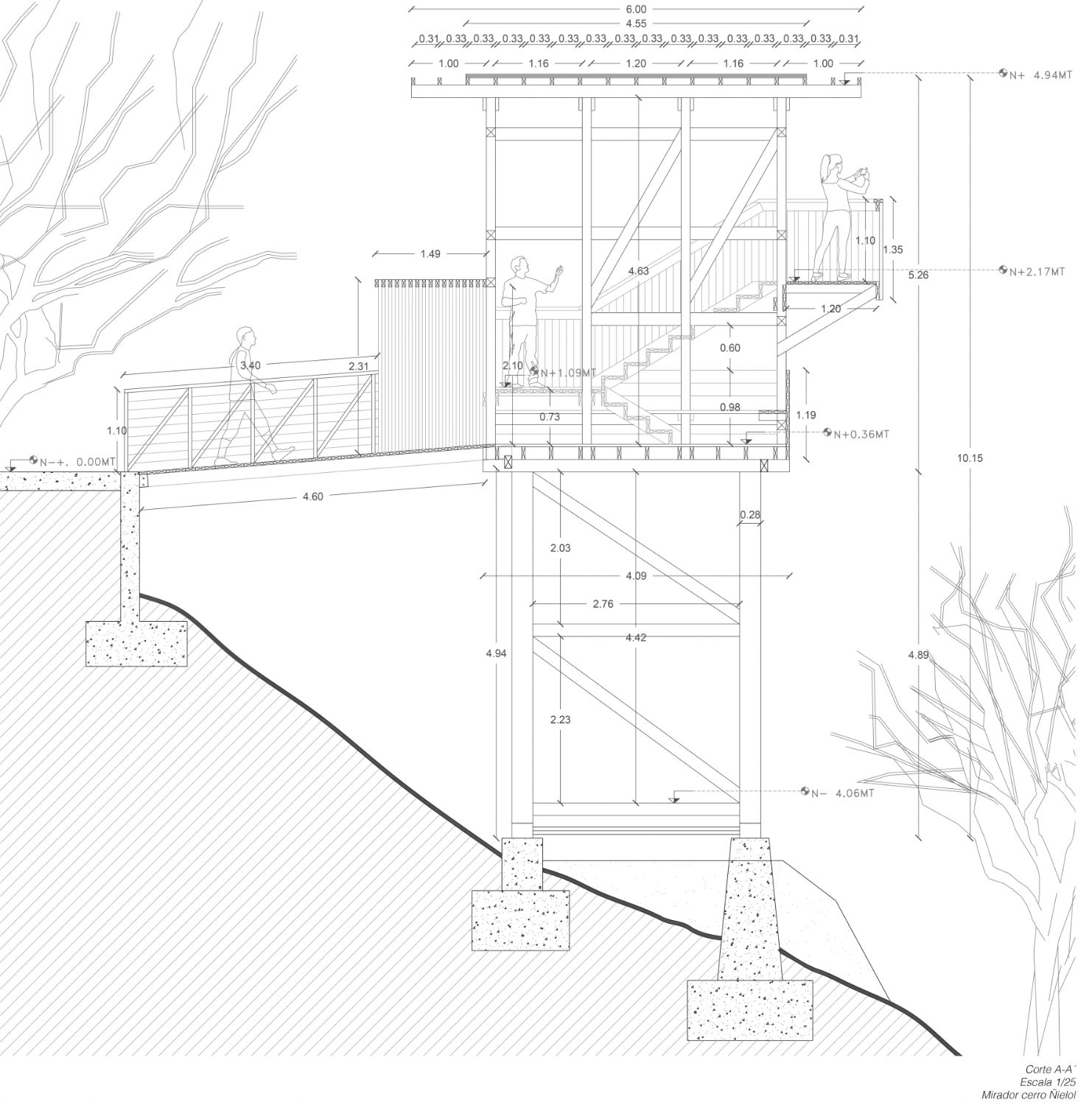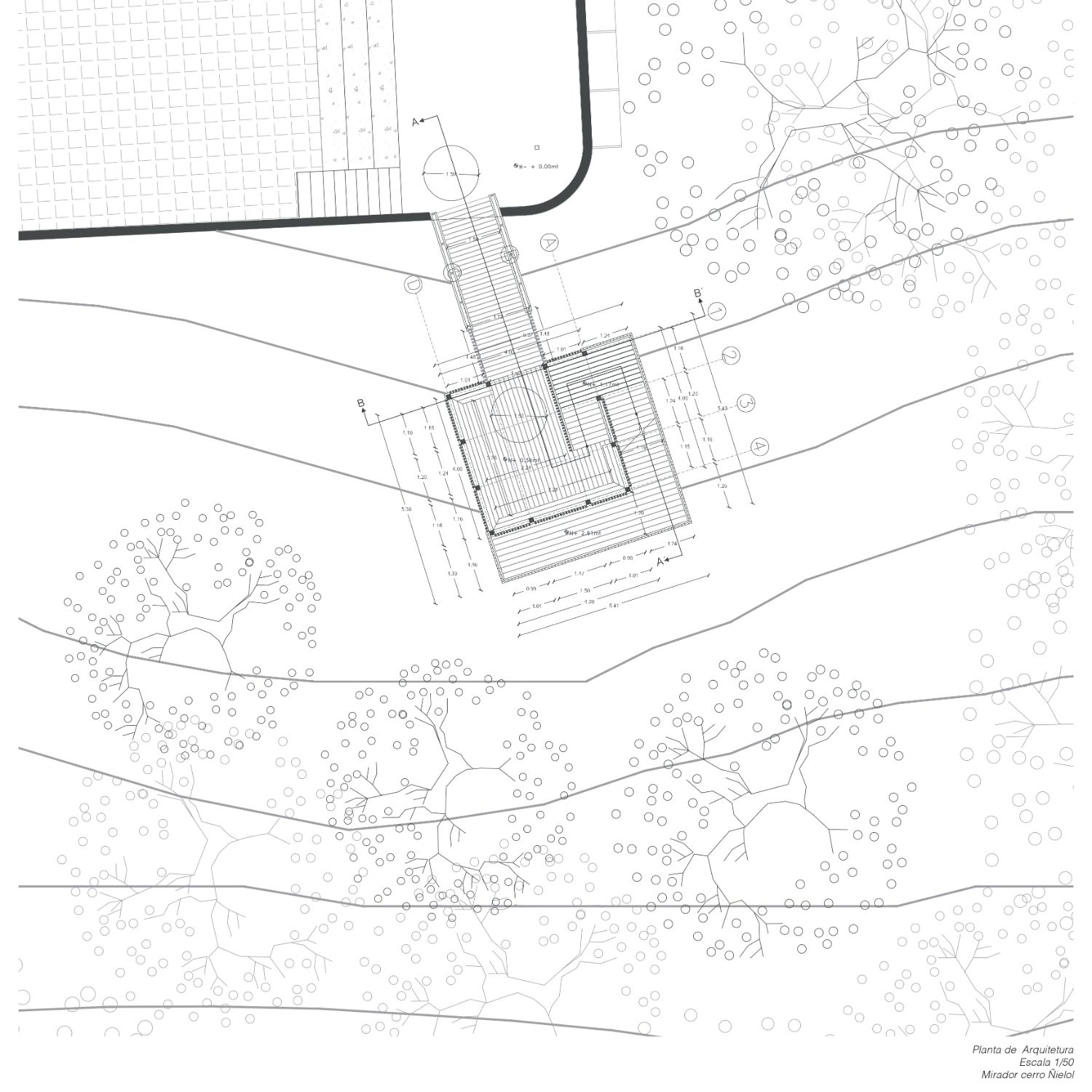The Ñielol Lookout/
Jaime Inostroza Arquitecto
Project Details

Location(City/Country):
Temuco / Chile
Tipology:
Small Project
Year (Design/Construction):
- / 2021
Area (Net/Gross):
- / 6.8 m2
Operational Carbon emissions (B6) kgCO2e/m2/y:
-
Embodied Carbon emissions (A1-A3) kgCO2e/m2:
-- The project takes advantage of the existing lookout structure that has been restored and reinforced, which reduces the building´s embodied energy consumption, depletion of natural resources and waste generation.
- Its main material is Oregon pine wood, which reduces the building’s environmental impact and carbon emissions.
Project description as provided by the Architects:
Just a seven-minute walk from the center of Temuco, you can reach the main entrance of Cerro Ñielol through Prat Street. This axis that links the foot of the hill and the other edge of the city, the Cautín River. In Chile there are only seventeen declared natural monuments and one of them is the Ñielol hill.
The Ñielol hill in its ascent, starts subtly by a winding path that follows the contour lines of the existing topography. This path formed by the density of shade from the foliage of native trees is suddenly illuminated by rays of light, leaving the inhabitant foreshortened with landscape windows that look out over the city of Temuco.
Reaching its summit at elevation 230, above sea level, the architectural procession is established by a staircase that gives the measure and distance to reach the large terrace, a horizontal one on a summit. By having a horizontal at the top, it already becomes an architectural fact and the gaze is raised above the domain over the landscapes, giving sizes, scales and the magnitudes that make up the landscape of the city, giving it an identity. The morphology of this valley is established, where the void is measured by the Conunhueno hill that faces the Ñielol hill, where in its lower part, like a diagonal avenue of water, the Cautín river can be glimpsed.
So, how can you build an architectural work to dwell the act of rising in an aerial profile and that manages to frame the landscape of this territory?
Returning to an identity of the ancient dwelling of Temuco, the old houses had a Zaguán, (threshold) a double door before entering the intimacy of the home. This small place against the light left a door with cathedral glass; a veil of light that let glimpse without discovering an interior. Therefore, when walking from the street, the step was shortened by glimpsing a silhouette of an interior. This observation of the ancient dwelling of Temuco was what was wanted to be rescued.
From my experience from building and designing “The Atalaya Shelter” at Taliesin West (by architect Frank Lloyd Wright), I try to explore a principle in architecture of how it can be elevated, suspended and at the same time the sequence of arrivals becomes a architectural procession where the inhabitant’s experience between fullness and emptiness is qualified by light. This shape the place and the location. The project tried to find a measure, a scale in between the sky, the tree and the existing platform.
The previous lookout was already 40 years old with obvious structural deterioration. From the structural and architectural study, it was established to recover and reinforce the existing concrete bases and conserve the four existing cypress pillars and from that form a new body, using Oregon pine wood. The project at its top is a complete renovation of the lookout structure that existed. The joints and links are made using Rothoblaas structural bolts.
From a base of four meters by four meters (13 feet by 13 feet), a double height is established, which incorporates a bridge as the main access. This defines a threshold from shadow to backlight. Then the visitor when walking from a compressed space, the space dilates and the height of the work appears; and sight measures. On its first level, with a continuous lower window, it allows the visitor to sit and contemplate the city, from its aerial geography.
This height is qualified by the wooden brise soleil, which, like veils of light, reveals the foliage of the landscape of the native forest of the place. Then for the second level it is linked by means of the staircase that passes to make an architectural element from an interior to an exterior, ending in an upper balcony, which makes up the second level. The inhabitant is now elevated in the aerial profile of the hilltop.
When commenting on this little project to Fernando Pérez Oyarzun, he mentioned that Alberto Cruz spoke of “The Height and the Altitude”. In a way, the project builds a new altitude for the city of Temuco and becomes an urban meeting space and a gift for the people.
As Frank Lloyd Wright said in his book, The Future of Architecture: “If the thing is successful (the architect’s effort) you can’t imagine that house in or that building anywhere other than right where it is. It is a grace to its environment, instead of dishonoring it.” So, the project became a gift to the place.
Photographs: Jaime Inostroza Campos
Builder: Las Rocas
Materiality:: Oregón pine, Martini Woods Company
Joint and Links: Rothoblaas
Client: Sociedad Amigos del Árbol
Financing: Ilustre Municipalidad de Temuco










